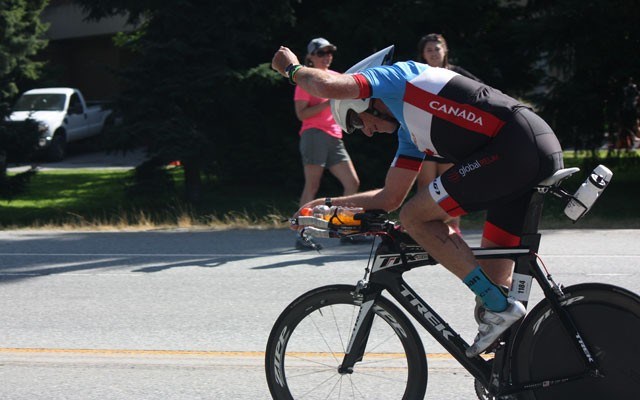In a recent social media post, one writer asked readers complaining about the busyness and inconvenience of the recent Ironman triathlon to think back to the days when you could fire a cannon through the streets of Whistler — as a way of illustrating how far the resort has come in building its tourism base and reputation.
The point is well taken, but is there a counter-argument about Whistler turning into a hoarder of events and activities?
There is no denying that busy is good for the majority of Whistler businesses and residents, but as we have seen with the pressure on traffic, housing and more, maybe too busy is a community challenge.
This past weekend saw the hosting of what appeared to be a very successful Ironman event — the last to be held in the initial five-year agreement between the Resort Municipality of Whistler (RMOW) and the owner of the Ironman events, Wanda Sports Holdings.
For weeks, there has been speculation about whether the event, which sees close to 3,000 competitors along with their supporters, coaches and families descend on the resort for the weekend or longer, would continue.
For its part, Pemberton has officially given the event the cold shoulder citing safety concerns on the Pemberton Meadows Road, the low exposure the village and area gets, and the negative economic impact Ironman causes with its extensive highway and road closures.
As Ironman got set to launch last weekend, its organizers, along with the RMOW and Tourism Whistler, announced that an agreement had been signed that would see the event stay here through 2020.
The agreement comes with a financial commitment of up to $280,000 annually in Resort Municipality Initiative (RMI) funding (this is money that flows annually from the province to 14 resort destinations and must be used to grow tourism).
Most of that money, $30,000 more than it was previously given annually, goes towards logistical support of the event, including waiving user fees at local parks, facilities, staff time, and the execution of the transportation plan.
The RMI funding — about $6.6 million this year — is secure to March of 2018 and then it's anyone's guess what the fate of the funding will be, especially as we now have a new NDP, Green Party-supported, government.
Last October, Mayor Nancy Wilhelm-Morden told Pique that if the RMI funding were cut it would require an 18 to 20 per cent property tax increase to make up the money by way of explaining the value.
But let's put aside the hard fact of the RMI funding for a moment and ask ourselves why any RMI money at all is being spent on an event that is part of a global billion-dollar industry (in the U.S., the triathlon market was estimated to be worth US$3 billion last year, according to a study by MultiSport Research)?
Let's consider the fact that Ironman was bought by one of China's wealthiest people, Wang Jianlin, who Forbes values at about US$30 billion — clearly a man who knows a thing or two about making money.
According to the New York Times, since Dalian Wanda bought Ironman in 2015 for US$650 million, the company has been on a buying spree in outdoor sports like marathons, road cycling and mountain bike races. The Wanda Sports arm of Dalian Wanda already owns or operates more than 20 running races worldwide, including the Singapore Marathon, the Auckland Marathon and Marathon Bordeaux, and most recently, the Rock 'n'Roll Marathon brand through its purchase of Competitor Group Inc.
According to the Guardian newspaper, Ironman brought in more than $180m in the year of its purchase with the event growing at more than 20 per cent a year — and remember this is an event with no permanent structures, staffed almost entirely by volunteers!
Does this sound like a company that needs RMI funds? Would RMI funds perhaps be better spent supporting more grassroots events to drive tourism here?
In announcing the new agreement, the Whistler stakeholders cited a 2013 study that found that the Ironman contributed $8.4 million in local economic activity that year. The assumption made is that it has continued to contribute at least that much each year.
(The study found quite a different picture for Pemberton, which saw just $140,000 in spending, supporting $212,000 of local economic activity.)
How does that stack up against some other large-scale, RMI-funded events — most also run by for-profit companies?
The World Ski and Snowboard Festival got $100,000 this year with economic activity pegged at $14.7 million (2012 stats); Crankworx received $20,000 in RMI and generated $20.2 million in economic activity in Whistler (2015 stats); Tough Mudder and Tough Mudder Half got $112,500 in RMI and brought $4.2 million to Whistler (2013 stats), and Whistler Pride and Ski Festival got $25,000 and generated $4.8 million in Whistler (2013 stats).
It's interesting to note that in December of 2013, the committee that decides RMI funding turned down a request from Whistler Pride saying the community didn't need any help putting heads in beds in February as the resort was so busy.
Couldn't you now make the same argument for Ironman in July?




